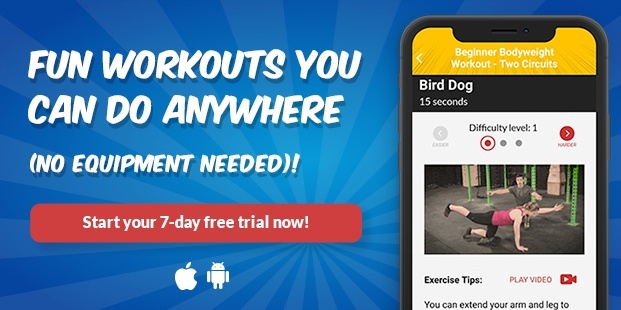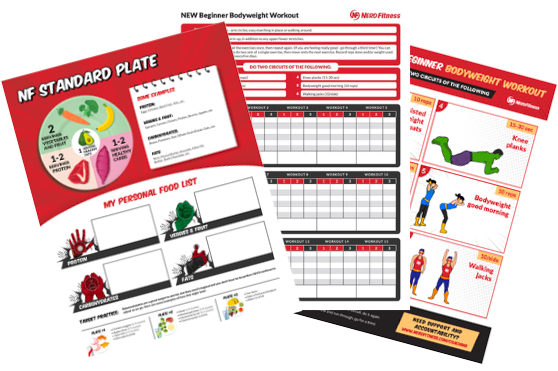
It’s time to learn how to lunge!
The lunge is a perfect bodyweight exercise that doesn’t require any equipment, so I’m excited you want to learn more about them.
When we design workouts for our coaching clients, we often include lunges so they can train their lower body ANYWHERE. Today, we’ll share with you the goods on how our clients perform their bodyweight lunges.
Here’s what we’ll cover:
- What muscles does the lunge train? (Why do lunges?)
- How do you perform a lunge? (Lunges for beginners)
- What is the difference between front lunges and reverse lunges?
- 15 lunge variations to try (How to scale lunges)
- How to include lunges in your workout (Next steps).
Let’s jump (lunge?) right in!
What Muscles Does the Lunge Train? (Why Do Lunges?)
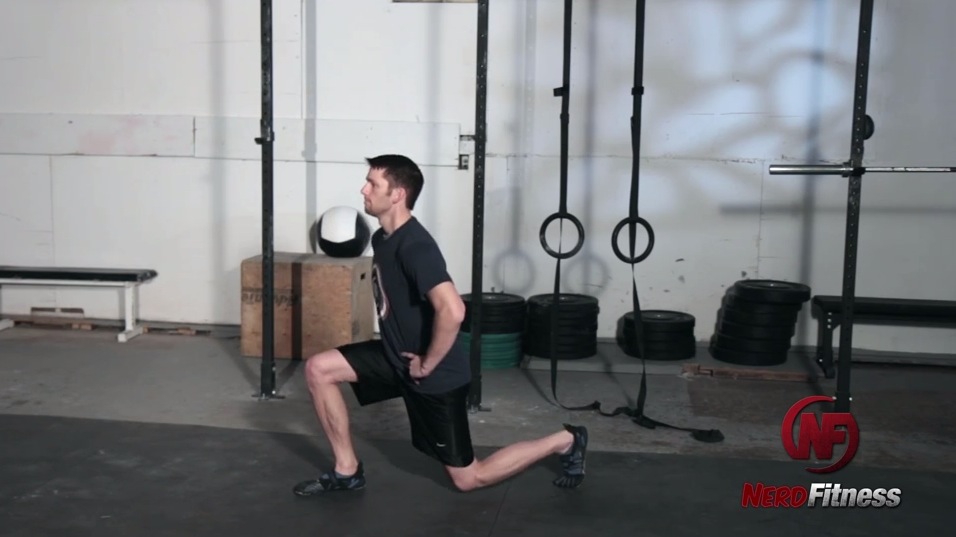
If you’re doing bodyweight exercises, lunges are a great addition.
With a lunge, you work your:
- Quadriceps (front of your thighs)
- Gluteus Maximus (butt)
- Hamstrings (back of your thighs)
- Calves (lower leg muscles)
- Core (abs, lower back)
Lunges are what we call a “compound exercise,” which means they recruit more than one muscle group as you perform the movement.
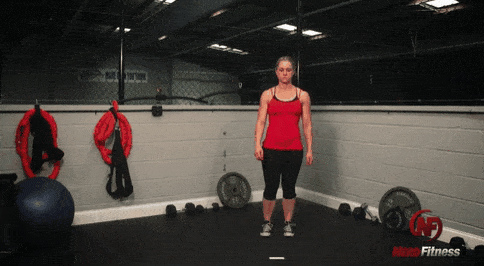
We’re big fans of compound exercises around these parts, because they more closely resemble how your body evolved to move.
If you’ve ever heard the term “functional fitness,” it’s the same idea here. A “functional” exercise is something that will help you in day-to-day life.
For example, when leaning down to tie your shoe, you’re probably doing some sort of lunge variation.
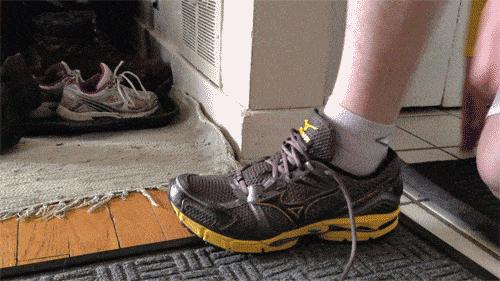
Since you have to hold yourself upright throughout the movement, performing lunges will help you achieve better balance. This is going to help in all sorts of ways as you go about your day.
Outside of a squat, there’s no better bodyweight exercise to train your lower body.
Plus, with a dumbbell or a kettlebell, you can easily add some weight to make them more difficult:
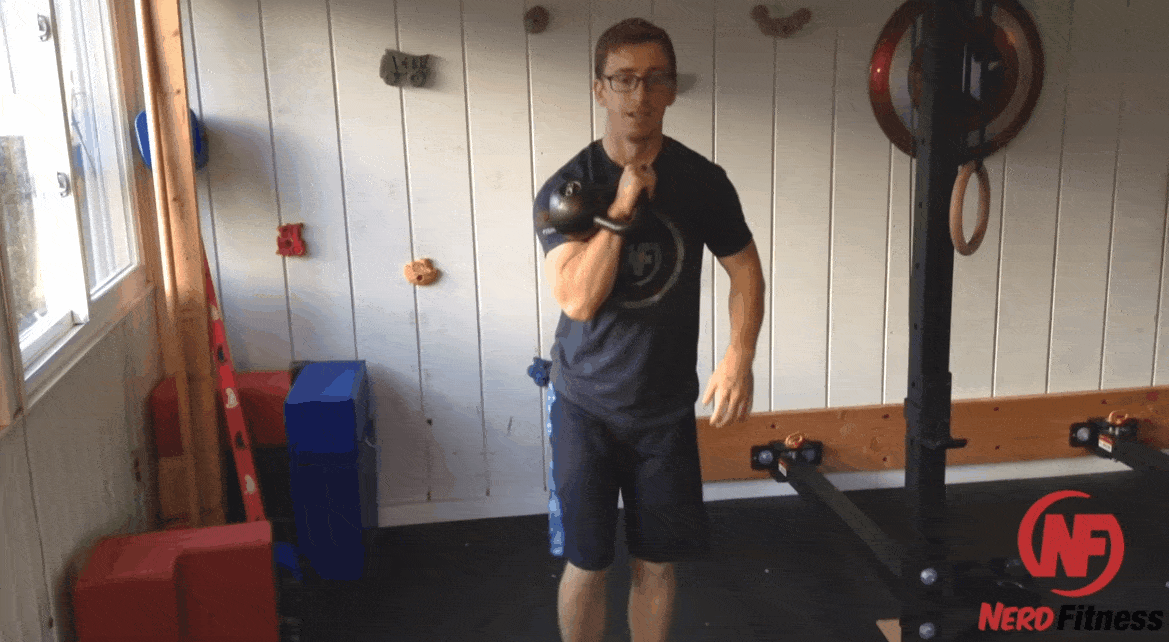
So let’s show you how it’s done!
How Do You Perform a Lunge?
In the video above (from Nerd Fitness Prime), Coach Jim and Staci demonstrate how to perform a bodyweight lunge.
To perform a forward lunge:
- Start by standing tall, feet hip-width apart.
- Engage your core by keeping your torso up. Place your hands on your hip.
- Take a big step forward with the leading leg. You’ll land heel first.
- Lower your leading leg until your thigh is parallel to the ground. Keep your forward knee aligned over your leading foot.
- Your back knee will come close to the Earth as it moves forward, but don’t allow it to touch the ground.
- Press into your heel to spring back to starting position.
- Repeat with the other side.
It’ll look something like this:
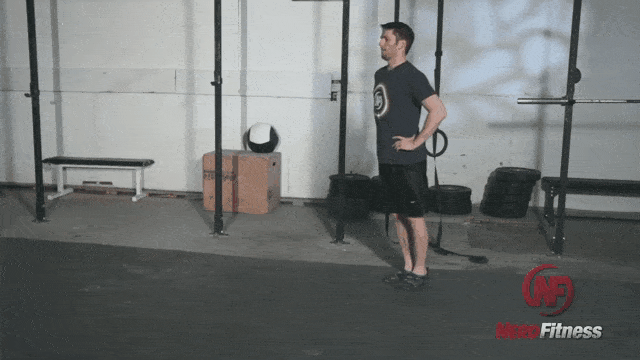
If a normal lunge is too much for you right now, no problem. You can still get started doing assisted lunges, like so:
The only real difference with the assisted lunge will be your hands. You’ll need to grab something to support yourself. It could be a weight lifting rack (like shown in the video), a doorway in your home, or even just a sturdy chair.
A park bench could also work well here:
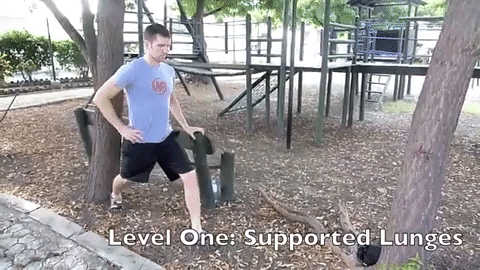
Another option to get you going would be a split squat (assisted variation shown below):
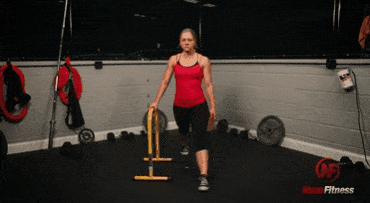
This exercise keeps your feet in place the entire time and can be easier to balance and manage when starting off.
The split squats may also be a better option for those of you with knee concerns – as it can often be easier to control the depth of the movement and keep you moving pain-free.
Now, let’s talk about lots of different lunge forms you can try. The most popular variation would be the reverse lunge, which we’ll devote an entire section to next.
What Is the Difference Between Front Lunges and Reverse Lunges?

The difference between a front and reverse lunge is all about the direction your leading foot is moving.
The front lunge has you stepping forward.
So with a reverse lunge, you’re stepping…wait for it…backward!

To do a reverse lunge:
- Start by standing tall, feet hip-width apart. Engage your core and try to stay upright throughout the movement.
- Take a step backward with your right foot. You should land on your toes.
- Continue to lower your hips so that your left foot lies below your knee, with your left thigh being parallel-ish to the ground.
- Your right knee will come close to the ground, but keep it raised enough so it doesn’t make contact.
- To come out of the position, push up from your left heel to spring back.
- Repeat with the other leg.
Much like the assisted front lunge we discussed above, a sturdy chair or doorway can help as you grow strength in this movement.
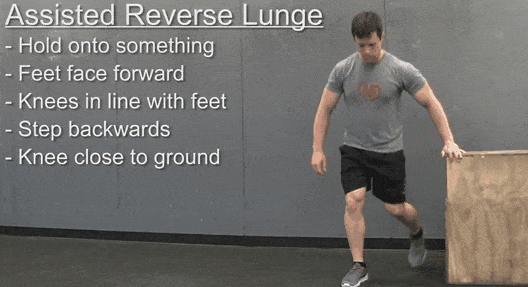
Why do a reverse lunge over a forward lunge?
The reverse lunge might be easier for a beginner than the forward lunge.
- With a reverse lunge, the stationary foot below you holds most of your weight.
- In a normal lunge, the foot moving forward holds most of your weight.
The difference in shifting weight may make balancing with a forward lunge more challenging.
Plus, for those of you with knee concerns, the reverse lunge may also feel kinder on the joint.
The forward lunge requires the knee and leg to decelerate the body in a certain manner (think of slowing yourself as you walk down a hill), which may cause discomfort. The different movements and mechanics of the reverse lunge may be a better option for you!
So feel free to start performing reverse lunges before you start lunging forward.
Now, the fun doesn’t stop once you get the hang of the forward and reverse lunges. Let’s discuss some more variations you can try out.
15 Lunge Variations to Try (How to Scale Lunges)
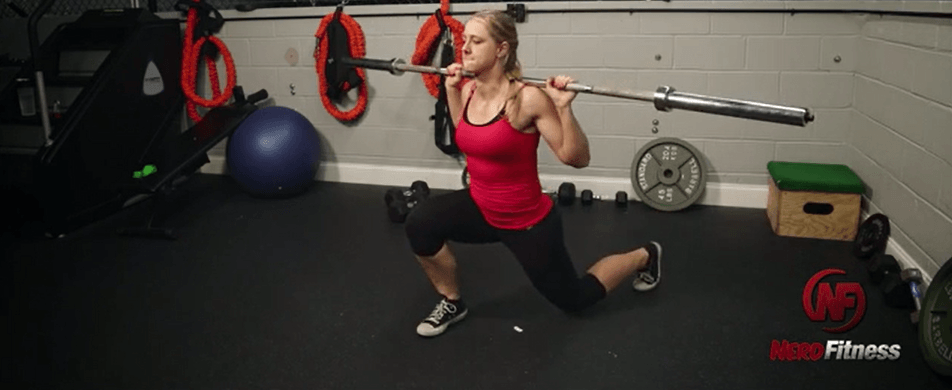
Depending on your current experience level, try some of these lunge variations on for size.
#1) One Leg Balance
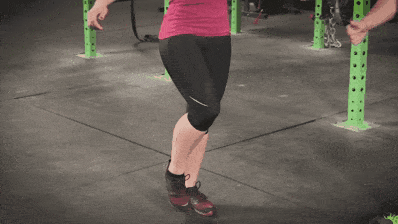
We mentioned earlier that lunges will challenge your balance. If this is tricky for you, start by just balancing on one leg until you get a little more comfortable.
#2) Assisted Forward Lunge
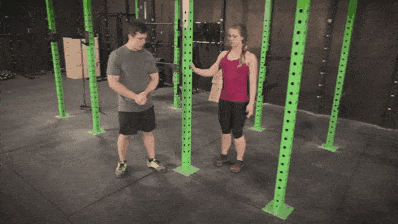
When you’re just starting out, go with the assisted forward lunge to help you build some strength.
#3) Forward Lunge
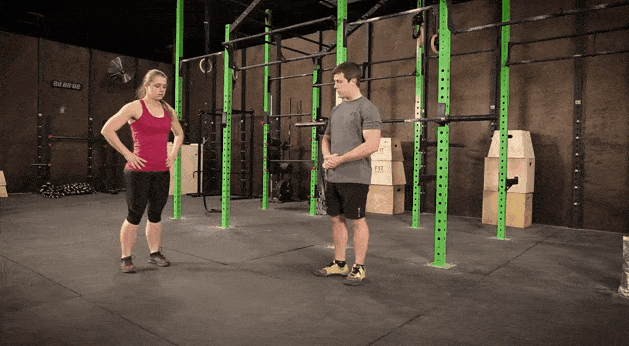
When people say “do a lunge,” they probably mean the forward lunge, as shown above.
#4) Reverse Lunge
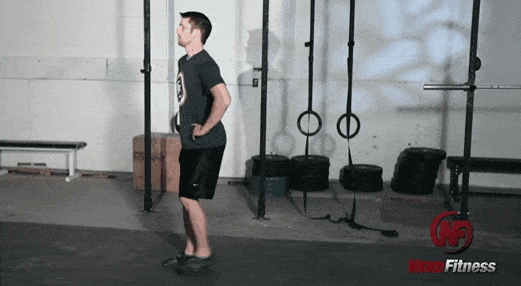
Once a forward lunge ain’t no thang, turn it around and try going backward (for funsies).
#5) Lateral Lunge
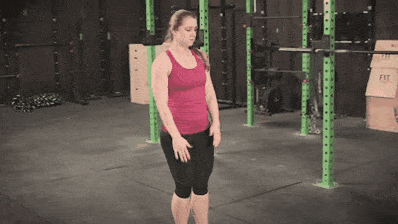
Forward and backward aren’t the only directions for our lunges!
To perform a lateral lunge:
- Step side to side, pushing knee out.
- Keep your lunging foot planted firmly, with the heel on the ground (your toe can optionally come up)
- Keep your torso up during the entire move – your hands can go forward for balance.
#6) Split Squat
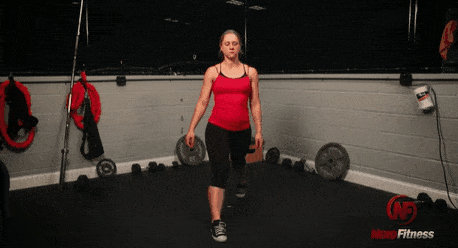
The difference here from a normal lunge: you step one foot forward and the other back, keeping them in place for the duration of the rep. That means your center of gravity is “split” between both legs.
#7) Step Up
Just when you thought we couldn’t add any more directions, we’re mixing things up with a whole new dimension: up!
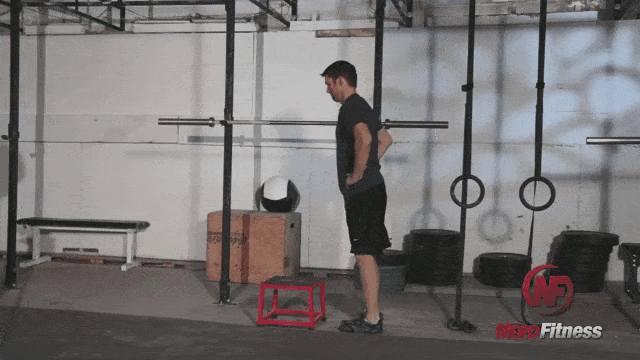
You can increase or decrease the height of the box to make the exercise harder or easier. Max box/bench height should put your thigh at parallel with the ground at the start.
#8) Bulgarian Split Squat
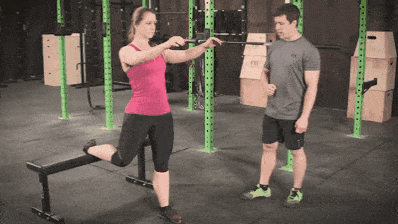
This squat/lunge variation is really going to challenge your quads and mobility in your hips.
To perform a Bulgarian Split Squat:
- Stand about 2 feet in front of a bench.
- Rest the top of your back ankle on the edge of the bench.
- Keep your torso up, using your hands forward as balance.
- Descend until your front thigh is parallel to the ground.
#9) Split Squat Jumps
To perform split squat jumps:
- Keep your torso up.
- Switch the position of your feet by jumping explosively.
- You don’t need to bring your knee to the ground.
#10) Walking Lunge
If you have a little room to maneuver, you can do walking lunges:
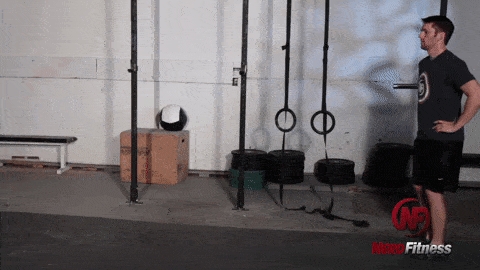
To perform a walking lunge:
- Stand with a shoulder-width stance.
- Step out with your right leg.
- Lower your hips until your back leg’s knee almost touches the ground.
- If you step out far enough, your front knee won’t extend past your toes.
- Explode forward and up by pushing off with your back leg and up with your front leg.
- Bring both feet together, and then step forward with your other foot and repeat.
#11) Pendulum Lunge
We’re going to really challenge your balance here.
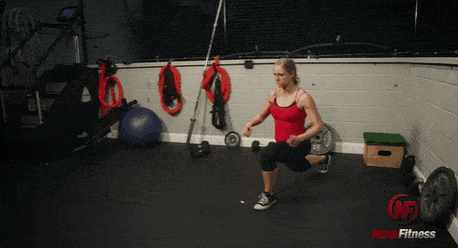
To perform a pendulum lunge:
- Stand with a shoulder-width stance.
- Step out with your right leg.
- Lower your hips until your back leg’s knee almost touches the ground.
- If you step out far enough, your front knee won’t extend past your toes.
- Explode up and back by pushing off with your front leg.
- Step back with the same leg into a back lunge.
- Step far enough back so that when you drop down, your right knee almost touches the ground (and your left knee isn’t extended past your toes!).
- Explode back to the starting position.
#12) Goblet Lunge
It’s now time to add a little weight into the equation:
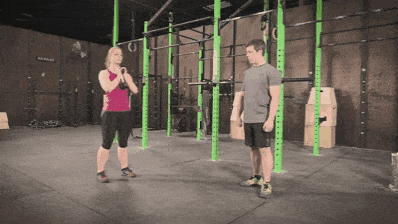
This exercise is just like a normal bodyweight lunge, but you hold a dumbbell between your hands as if it were a goblet (keep it upright so it won’t spill).
If you can’t maintain good form, decrease the dumbbell weight.
#13) Overhead Lunge
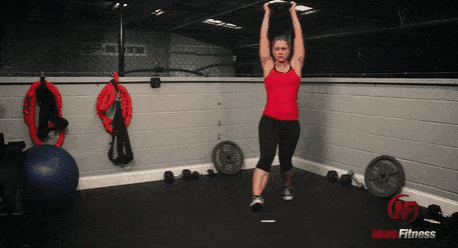
This is much like the goblet lunge, but you hold the weight over your head. This will provide a full-body workout as you maintain the weight above you.
#14) Barbell Lunge
Once you get accustomed to performing lunges with a barbell, there’s practically no limit to how intense this exercise can get:
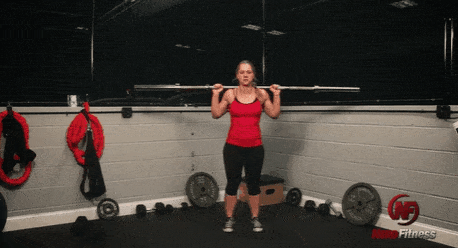
To perform a barbell lunge:
- Stand with a shoulder-width stance.
- Have the bar across your upper back, with an overhand grip.
- Step out with your right leg.
- Lower your hips until your back leg’s knee almost touches the ground.
- If you step out far enough, your front knee won’t extend past your toes.
- Explode up and back by pushing off with your front leg.
#15) Split Squat, Front Foot Elevated.
This will be a more challenging variation for your hip and ankle mobility – since your foot is elevated they’ll be required to move a bit more as you sink deeper into the exercise.
As with other lunge variations – this can be done assisted, unassisted, or with weights!
How to Include Lunges in Your Workout (Next Steps)

The only question left to answer is when to do your lunges.
For that, it’s time to build a workout routine.
We generally recommend our coaching clients complete a full-body strength training workout 2-3 times per week.
Such a full-body routine would include your:
- Quads (front of your legs).
- Butt and hamstrings (back of your legs).
- Chest, shoulders, and triceps: (“push” muscles).
- Back, biceps, and grip ( “pull” muscles).
- Core (abdominals and lower back).
Lunges would cover your entire lower body. So would bodyweight squats.
If you went with a Monday-Wednesday-Friday workout schedule, you could do:
- Monday: Forward Lunges
- Wednesday: Bodyweight Squats
- Friday: Reverse Lunges
All you’ll need are some pull, push, and core exercises and you’ll have a full-body program. For suggestions on these, make sure you read our guide on building a full-body workout routine.

Want a little more help getting going? You seem like a nice person, so I’ll share with you our top suggestions for next steps:
Option #1) If you want a professional coach in your pocket, who can do video form checks, provide feedback, and adjust your workouts based on the equipment you have available, check out our 1-on-1 Online Coaching Program!
For example, let’s say you find yourself stuck indoors during a pandemic, and you want somebody to custom-build you a workout program based on the equipment and furniture you have. That’s where an online coach is a game-changer!
Personally, I’ve been working with the same online coach since 2015 and it’s changed my life. You can learn more by clicking on the box below:
Option #2) If you want a daily prompt for a functional fitness workout, check out NF Journey. Our fun habit-building app helps you exercise more frequently, eat healthier, and level up your life (literally).
You’ll learn how to do awesome bodyweight exercises like lunges, all while earning XP! Sa-weet!
Try your free trial right here:
Option #3) Become part of the Rebellion! We need good people like you in our community, the Nerd Fitness Rebellion.
Sign up in the box below to enlist and get our Rebel Starter Kit, which includes all of our “work out from home” guides.
Alright, now I want to hear from you and your experience with lunges!
Do you include lunges in your bodyweight training?
Any lunge variation I’m missing?
What are your questions on how to get started with lunges?
Let me know in the comments!
-Steve
PS: If you’re interested in more no-equipment workouts, check out The 42 Best Bodyweight Exercises.
###
Photo Source: Fencing, A good Sunday to you, Yoga Sunset.

